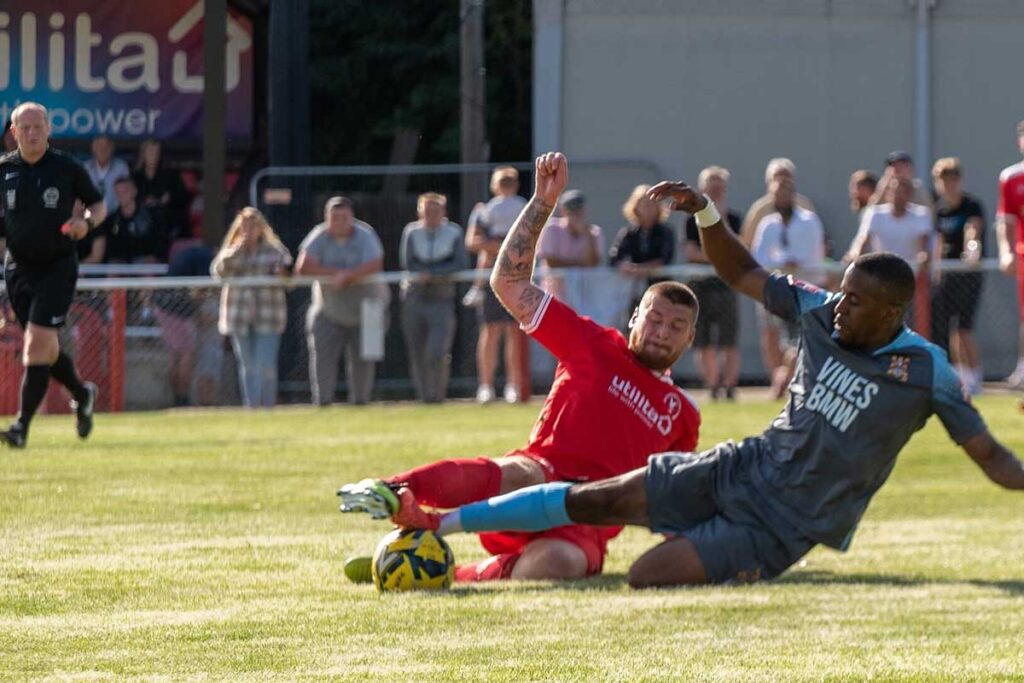Are you struggling to maximise your fundraising opportunities at your club or organisation?
Don’t worry, you’re not alone.
Kevin DeLaney from Academy Street Workshop recently held a webinar for us here at LoveAdmin about creating a fundraising plan for your club or organisation.
From understanding what skills you have available, what will give you the biggest return and how to execute your plan, this webinar is one not to miss.
Fundraising doesn’t have to be hard. With the right strategies and approach, you can make fundraising easier and more successful than ever.
Learn how to raise money smarter and not harder with these helpful tips.
Before you start…
It’s important for you and your members to really understand how they can reach the hearts and pockets of potential donors.
To do this effectively they must understand and share the answers to these three important questions.
Why do you exist?
If you’re expecting people to part with their money, there has to be a strong narrative about your purpose and value.
By simply saying, “we need money for a new strip.” You’re just asking for what you want, not expressing the value of your club and its impact on the community. You don’t just play football on a Saturday morning, you teach teenagers team building and interpersonal skills, you don’t just run a dance studio, you provide a place where children and adults can gain confidence, improve their fitness and get away from social media.
Ask your members to think about your club’s positive impact on your community so that when they are asking for money they’re representing the very best aspects of your club
What do you do?
You want to be able to say more than just “Oh we just kick a football around.”
You want people to really understand what your members gain from participating and how that can positively impact the community. Kevin gives this example:
“We organise training, social activities, and games so that they can participate in sport in a safe, nurturing way because we believe that the young people of our community deserve to have a place where they can come together, feel a sense of identity, get physically fit… This is about teamwork, this is about unity, it’s about belonging, it’s about self-esteem, mental health, physical fitness.”
This says far more about your club than just stating what sport you play or the activity you teach.
Why should they care?
When you’re speaking to a potential giver, they need to be given a reason why they should care.
Maybe they’re not aware of the importance of the history of your club and its standing in the community. Maybe they’re a football fan, not a rugby fan, so find a way to link it back to them. For example, if you’re talking to a local councillor, position the club as an asset in combating anti-social behaviour. Kevin gives this example “I’m sure as a local councillor you want good, safe places and facilities to keep the kids occupied and engaged”. If they have their own kids then you could say something like,” … as a father of two young boys in this community, I’m sure that you would want to make sure that as they get older, they have a place where they can participate with their friends in a safe environment.”
Throughout this process, you’re making the donor feel like a hero. Show them how they are personally making a difference to the community by donating to this excellent cause. Their donation is helping to keep kids off the street and inspire them to stay fit, healthy and productive. It’s also important that you understand and really believe in your club’s importance. You’ll be up against other worthy causes, so don’t be afraid to consider yours just as important.
When you’re ready…
Creating a fundraising plan
Careful planning can make a huge difference to your fundraising efforts. Your members will want as much clarity and direction before planning how to raise money themselves, so make it easy for them. Don’t just rely on your fundraising committee or the fundraising officer. Everyone in your club or organisation should feel a sense of responsibility to help it grow and thrive.
Macmillan, for example, does a great job of setting the expectation that members of the general public should do something. By providing templates for invites, posters, checklists and publicising tips, they equip individuals with everything they need to put on their own event or coffee morning. They put the onus on individuals to hold coffee mornings without anyone on the actual Macmillan fundraising team having to get involved personally. This means that everyone can have ownership of the fundraising mission. So, consider setting up templates for letters and invitations that are readily available to your members if they want to do some fundraising.
Before making your plan though, it’s important to bear these things in mind:
What are your resources?
Make a list of all the skills available in your club. Staff, skills, experience, buildings (hall, clubhouse etc), volunteers, money. database skills, social media, anything! Work with what you’ve got and work to your members’ strengths.
You can do anything but not everything.
As a fundraising officer or committee, it can be tempting to bear the burden of an entire fundraising drive alone. But individuals are limited by time and availability. By delegating tasks to members with the appropriate skills, you’ll get much more done and the whole process will be far less stressful.
The Fundraising mix
There are many different ways to fundraise, but which ways make the most money with the least effort?
Community fundraising
This can be a really fun way of fundraising for your club or organisation. It also involves the community and builds community buy-in. When you bring your friends and family along to these events, your network can expand and your reputation can spread. On top of that, this type of fundraising is limitless, there’s no cap on how much money you can raise.
However, how can that idea be expanded year after year? Community fundraising is also extremely time and planning heavy. We all like the idea and principle of community fundraising. After all, putting the “fun” into fundraising sounds great, but in reality, these initiatives take a lot of time, money and planning to set up, when there are other avenues with a higher yield from less investment. It shouldn’t be relied on as a consistent stream of fundraising because unfortunately, it can be very fickle.
Corporate partnership
Corporate funding can give more money than the average person can, and we ask for it because It’s less awkward than approaching people we know individually. Kevin says that “We can’t lean on them as our get out of jail card.”
Corporate partnerships give you money in their own interests not because they have altruistic intentions. Kevin also highlights that “The relationship is about them and not you.” You shouldn’t bow down and kiss the feet of the big corporations. Remember as a club / organisation you are much more valuable to them than you might initially think.
“Don’t offer them something extra, if they agree to give, then just being associated with your club is of huge value to them, in terms of community standing and reputation. We should really believe that young people deserve this. We’re asking them to support the community that they’re part of, we’re doing them a favour here. You’re offering them something way more valuable than they’re offering you.”
Kevin also warns, “…don’t ever give more than you feel comfortable with. And if they’re not interested… It’s fine, we’ll find a local business that does care about the community.” Although he doesn’t advise actually saying that, he does encourage you to go in with the attitude that your club deserves their money and they’re lucky to be able to contribute to it.
Grants and foundations
Kevin says that the two most important things to do when applying for a grant, are to make sure your club is actually eligible for it and that you fill out the form correctly. They may sound obvious but when talking to grant providers, they said that those are the two most frustrating things they see. He also suggests you don’t blindly apply for every grant you hear about. Make sure it’s meant for your type of setting, otherwise, you’ll start to become an irritation to the grant administrators and may lose out on grants you are actually eligible for.
Direct mail
Our instincts are to keep the mail-out letter short and sweet, but research has shown that when you send a 6-8 page letter you’re inviting the reader to spend time with you, to get to know you. Kevin stresses that “the longer the letter I kid you not, the more people that are likely to respond to you.”
It’s expensive to do mail-outs but to help keep costs to a minimum we recommend mobilising the members in your organisation. From helping you to write the letters to printing them off at home, everyone can get involved. You can even utilise your army of people to help distribute them in their local communities, just think of the potential reach!
Tele fundraising
This is the same as direct marketing, in the sense that you’re telling the person at the end of the phone that they’re really important to your organisation and that you need their help.
Again, you make them the hero. Kevin suggests, when using this approach, “…get everyone together and ask them to come up with a list of ten people who’ll be willing to give £50 for example. You gather together as a club, get your phones out and simply start calling. Have a telethon! Call grannies, uncles, mums, dads, friends, colleagues etc. It’s not nice, you probably won’t like doing it but it’s much cheaper than holding an event and it’s finished in an hour.”
Major donors or investors
Ask your members, “who do we know personally who can give us £500?” If you have a personal connection to someone wealthy or famous then it’s worth asking if they could make a donation to your organisation. If they buy into the philosophy of the club and what you’re achieving, then they can become a local hero and regular donator.
Rate every potential fundraising idea against the others
The most important thing to remember is that whatever strategy you choose, it’s got to work for you and your members. We recommend getting everyone together as a collective to decide on what fundraising activities you do this year. Think about what will bring in the most money with the least amount of effort.
When doing that remember to consider these five things:
- Is this effective?
- How practical is this idea?
- What’s the deliverability? Is it something we can achieve with the talent we have?
- What gives us the best return on investment in terms of money and time?
- Does it fit with our philosophy?
Magic arrow
The magic arrow is a flow technique and this is one Kevin created specifically for fundraising.
I work for (…) > I care about the cause because (…) > I believe that we are going to (…) > I think you would enjoy getting involved because (…) > will you (…)?
Kevin recommends not using a script as it can often sound false and forced. Instead, try creating a magic arrow for your club that people can use as a guideline.
Please bear in mind that there are three keys to this:
- I care because…
- You would enjoy getting involved because…
- Be specific – ask and wait for them to respond, don’t rush to fill a gap in the conversation.
- Donor care – before
Remember, it’s much easier to get the second donation than the first one. So that first call is really important, don’t waste it! When it comes to giving away their money, donors love clarity and good communication. Make sure you know the answers to these questions and promptly deliver on any promises you make.
- What are you asking me to do?
- Why are you asking me to do this?
- How do you want me to do this? (Cheque, bank transfer?)
- What will you do next? Once we’ve received it we’ll send an email confirmation.
Donor care – During
When someone has made a donation, it’s essential that you send confirmation of receipt as soon as possible. If they don’t get confirmation soon after they’ve sent the money, then you are leaving room for your donors to start feeling uncomfortable, wondering if they’ve been potentially scammed.
You want them to know that you are trustworthy and good stewards of their gift, otherwise, they won’t want to donate again next year. Lateness or unreliability implies inefficiency and a lack of professionalism, so prioritise those acknowledgement emails and make sure your processing procedures are already in place.
It’s also really important to make your donors feel special. So send them a thank you card from the team and make sure they’re mentioned in any newsletters.
Donor care – After
Following up is just as important as securing that first donation. By making your donors feel like they’re part of your organisation’s community, they’re more likely to want to donate regularly. Everyone who gives likes to see where their money has been spent. So sending a photo of the team wearing their new kit (paid for by them) after they’ve just won a match, will mean a lot.
Remember to make your updates personal so that they become invested in real people with real stories. If someone in your dance studio has been cast in a West End show, then tell your donor all about it. Share their story and how they were nurtured and developed in your school. Remember all donors want to know:
- What was the impact of my donation?
- Was it a success or a failure?
- What’s the next dream?
We hope this has been a useful guide to fundraising for your club. Although it may not be the most fun or exciting part of what you do, it’s absolutely essential to the ongoing success and development of your organisation. Good luck!
Got the plan in place but struggling to come up with ideas? Read our ultimate fundraising ideas for your club or organisation blog.
Want to learn more about the LoveAdmin platform and uses by clicking below or view our pricing.
















